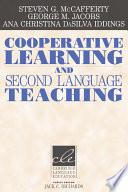
Handbook of Research in Second Language Teaching and Learning
This landmark volume provides a broad-based, state-of-the-art overview of current knowledge and research into second language teaching and learning. Fifty-seven chapters are organized in eight thematic sections: *social contexts of second language learning; *research methodologies in second-language learning, acquisition, and teaching; *contributions of applied linguistics to the teaching and learning of second language skills; *second language processes and development; *teaching methods and curricula; *issues in second or foreign language testing and assessment; *identity, culture, and critical pedagogy in second language teaching and learning; and *important considerations in language planning and policies. The Handbook of Research in Second Language Teaching and Learning is intended for researchers, practitioners, graduate students, and faculty in teacher education and applied linguistics programs; teachers; teacher trainers; teacher trainees; curriculum and material developers; and all other professionals in the field of second language teaching and learning.
- ISBN 13 : 1135636451
- ISBN 10 : 9781135636456
- Judul : Handbook of Research in Second Language Teaching and Learning
- Pengarang : Eli Hinkel,
- Kategori : Education
- Penerbit : Routledge
- Bahasa : en
- Tahun : 2005
- Halaman : 1176
- Halaman : 1176
- Google Book : https://play.google.com/store/books/details?id=jMSOnbrvZ0QC&source=gbs_api
-
Ketersediaan :
Genre knowledge, ofcourse, is not an instructional aim in itself; rather, it serves as
a vehicle for engaging withcore ... Those who have successfully investigated and
experimented with socioliterateand genre- based writing pedagogieslikewise ...






